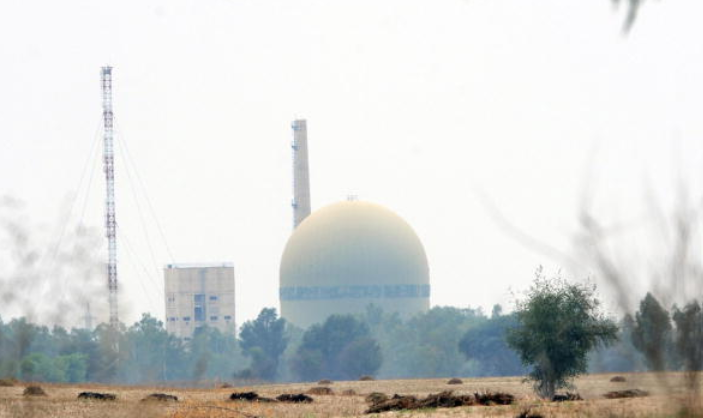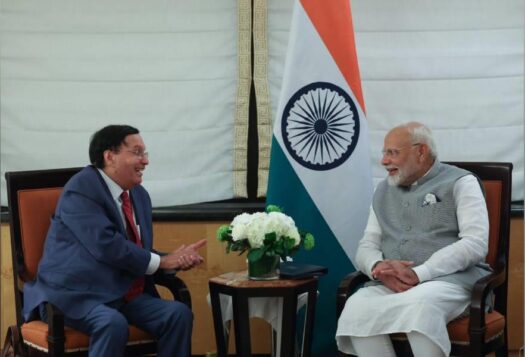
In recent years, Pakistan has grappled with soaring inflation, environmental disasters, and the risk of loan default. Pakistan relies heavily on imported fuel and, with a faltering economy, has been unable to pay power producers, driving the circular debt. Energy shortages contribute to the economic crisis and exacerbate Pakistan’s existing problems with pollution and environmental fragility.
Pakistan must find a long-lasting solution to meet its growing energy needs. To do so, Islamabad should boost investment in Small Modular Reactors (SMRs), utilizing Chinese support through the China-Pakistan Economic Corridor (CPEC). As the name suggests, SMRs use a conventional nuclear reactor mechanism but are small enough to be conveniently transported to their intended installation location. The reactors’ small size is meant to decrease construction timeline, costs, and disaster risks.
While SMRs are convenient to install, critics argue that the technology does not broadly address concerns around nuclear technology. Installing nuclear energy infrastructure is often controversial, from the factors influencing site construction to the disposal and management of radioactive material. Some analysts believe that SMRs produce energy on too small a scale to supplant traditional methods of energy production. SMR proponents, however, believe that since wind and solar remain too costly or inconvenient for many countries to meet their energy needs, nuclear energy is best positioned to fuel a green energy transition. SMRs’ smaller amount of fissile material makes large-scale disasters unlikely, so that the technology may be more acceptable to the public than traditional bigger reactors.
Islamabad could boost investment in Small Modular Reactors (SMRs), perhaps with Chinese support through the China-Pakistan Economic Corridor (CPEC).
SMRs have yet to achieve widespread adoption, as the international community is still debating best implementation practices. Currently, China and Russia are some of the world’s first SMR operators, but states, including the United States, South Korea, and Argentina, have approved SMR design or construction. As a member of the International Atomic Energy Agency (IAEA), Pakistan has received international assistance to comply with nuclear safety and transparency standards. However, Pakistan’s nuclear energy sector currently contributes to less than 10% of its overall energy production. Pakistan might find SMRs viable alternatives to conventional reactors, offering a sustainable energy source with modest output to decrease its dependence on imported fossil fuels.
China-Pakistan Nuclear Cooperation: Prospects for Small Modular Reactors
China has already made significant investments in Pakistan’s energy production, particularly thermal energy, with smaller investments in renewable energy sources. However, since 2003, China-Pakistan cooperation for the transfer of peaceful nuclear technology has grown steadily, with China National Nuclear Corporation (CNNC) spearheading most of the projects. Pakistan was the first-ever state to receive Chinese Hualong One reactor technology, with two of these reactors now online at the Karachi Nuclear Powerplant (KANUPP). With the prospective installation of another Hualong One with a 1200 Megawatt capacity at Chashma Nuclear Powerplant (CHASNUPP), China-Pakistan nuclear cooperation is now quite extensive. Beijing, additionally, is increasing its attention toward SMRs, as evidenced by its construction of a 200-Megawatt reactor at Shidao Bay and an ACP-100 Small Modular Reactor Demonstrator ‘Linglong One’ at Changjiang Nuclear Powerplant. Consequently, China could lead global commercial employment and transfer SMR technology to Pakistan.
The fate of negotiations and possible investment in SMR technology in Pakistan depend less on Beijing than Islamabad. The IAEA is satisfied with Pakistan’s safety standards, and China has historically invested in Pakistan’s nuclear energy. SMR technology will not be totally foreign to Beijing and the IAEA, but the Pakistani public may be less receptive. Pakistan’s government has a growing interest in nuclear technology, but awareness of new reactor designs and technologies is not yet a political priority. The national discourse should introduce more research and socialization before Pakistan presents Beijing with concrete policy options for SMR socialization.

SMR investment could be mutually beneficial. In recent public statements, President Xi Jinping emphasized China’s moratorium on fossil fuel investments, which will impact Islamabad. To date, investment through CPEC has been chiefly in conventional energy sources, reflecting Pakistan’s fossil fuel dependence. In the future, KANUPP and CHASNUPP may be over-saturated and can no longer be expanded. SMRs would be cheaper to construct than new traditional reactors, allowing Pakistan to transition from fossil fuel dependence.
For China, investing in Pakistan’s SMR technology would adhere to its commitments to cease exporting fossil fuel technology while positioning itself as a potential supplier of SMR technology for other states. For Pakistan, this opportunity would allow it to move away from conventional sources of energy production. With CNNC’s growing interest and practical steps toward adopting SMRs, the Pakistan Atomic Energy Commission (PAEC) should ask the government to authorize further investment. This initiative should be part of the CPEC framework, benefiting Beijing by signaling its commitment toward carbon neutrality while allowing Islamabad to seek concessions for installation, a principal feature in the CPEC framework.
The Trade-offs in SMR Investment
The transition to SMRs may be challenging. There are major roadblocks to SMR technology, including convincing international stakeholders on safety and security commitments on new nuclear projects, convincing China to invest in novel technologies under CPEC, and avoiding a strong enticement of political mileage through short-term energy projects. To gradually reduce its circular debt and energy deficiency, Islamabad would have to resist short-term political successes by immediately adding more conventional power plants as it moves away from lucrative bids to install fossil fuel energy sources.
With Beijing’s recent investments in Pakistan’s nuclear sector already bearing fruit, collaboration on SMR technology could be the next step towards greater energy cooperation.
Perhaps Islamabad’s greatest challenge will be satisfying international organizations that Pakistan is prepared for SMR introduction. Pakistan’s nuclear ambitions are already under considerable scrutiny, and China has been criticized for extending technology to Pakistan despite its Nuclear Security Group commitments. Although some initial projects are underway, meeting international compliance standards will require extensive work by PAEC to prepare a work plan focusing on CNCC supporting SMR installation in Pakistan. Pakistan has long-held global nuclear regulatory organizations, but institutions are politically imbalanced and would have to walk a fine line not to upset nonproliferation norms while pursuing SMR technology. To prepare for this, Pakistan and China should begin comprehensive discussions on adopting new nuclear technology through feasibility assessment programs and site selection under the Public Sector Development Program (PSDP). As a pre-feasibility process, site inspection and joint studies that have already occurred within PDSP’s power and energy division would be bureaucratically convenient.
Increased nuclear cooperation between Pakistan and China, especially novel technology like SMRs, could provoke heated debate around Pakistan’s position in global nonproliferation systems. Pakistan will need to make a solid case to China about the benefits of energy investment within and beyond CPEC to have China’s buy-in to seek workarounds for Pakistan within the NPT and the NSG framework. Pakistan’s energy needs will continue to grow, so despite these political and financial challenges, Islamabad must invest in cleaner and sustainable energy sources, including nuclear energy. With Beijing’s recent investments in Pakistan’s nuclear sector already bearing fruit, collaboration on SMR technology could be the next step towards greater energy cooperation.
Also Read: Nuclear Energy and Pakistan’s Economic Challenges
***
Image 1: Aamir Qureshi/AFP via Getty Images
Image 2: Nuclear power plant in Isar via Wikimedia Commons


